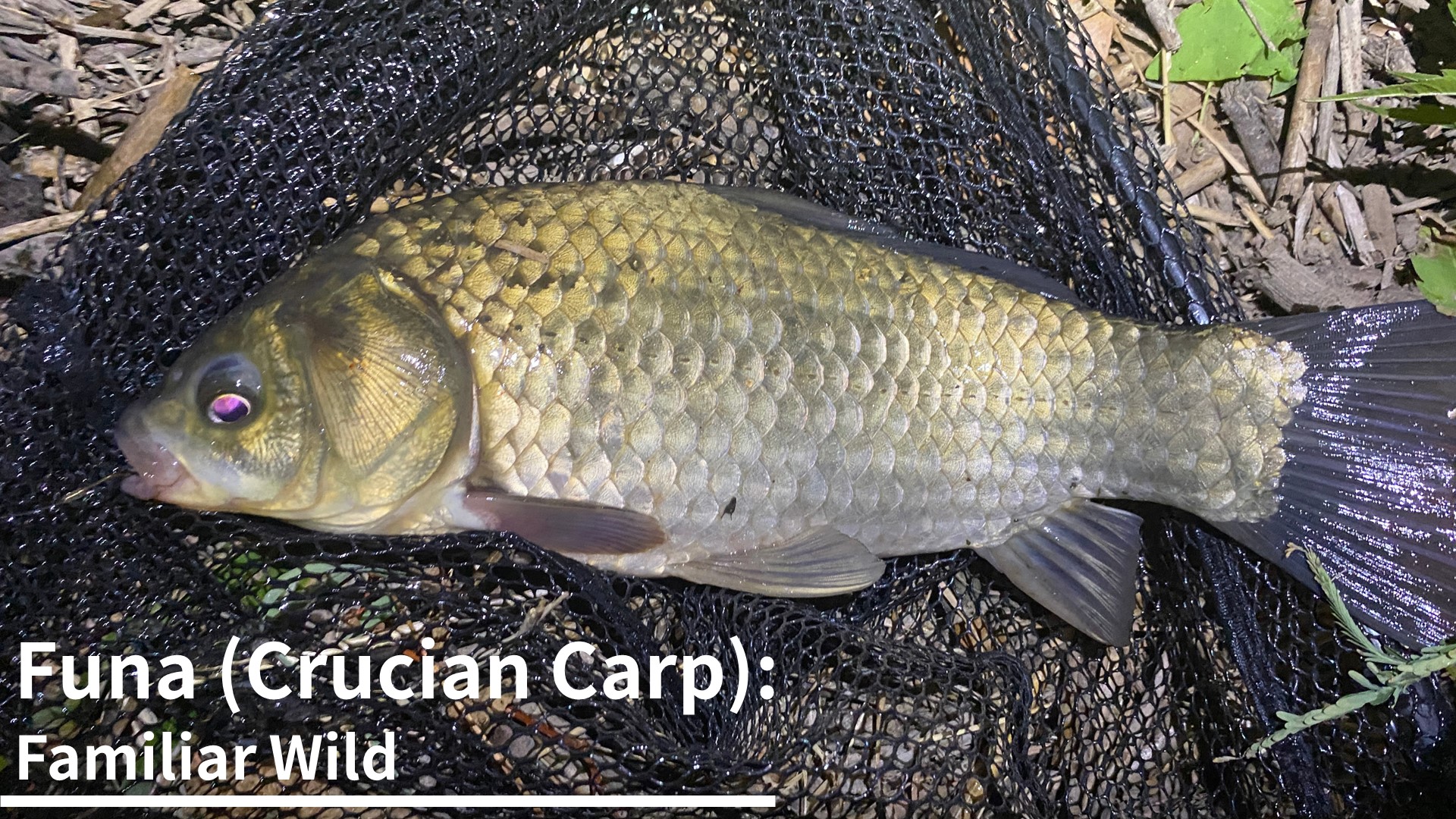When I was a child, I had a goldfish that I caught at a festival’s goldfish scooping game. One day, when I visited a neighbor’s house, I saw a fish in their aquarium that looked like a goldfish, but was colorless and shining silver. Curious, I asked about it and learned that their child had caught it with their father at a nearby pond.
Even back then, I had a strong fascination with the wild lives. That silver fish, swimming gracefully in the water, seemed incredibly majestic to me. It was like comparing a domesticated dog at home to a wild wolf in nature. The contrast was striking and ignited a curiosity within me about the natural world.
The crucian carp is a fish widely found in Japan’s freshwater areas and is classified under the carp family. In Japan, there are six types of crucian carp belonging to the Carassius genus, and they are difficult to distinguish due to their similar appearances. However, each species inhabits similar environments, such as lower river flows, ponds, and marshes, often found in the densely populated plains. Therefore, the crucian carp is a familiar presence to the Japanese people.
In terms of food culture, crucian carp are used in unique regional dishes. For example, in Okayama Prefecture, “Funa-meshi” is a traditional rice dish made with crucian carp, and around Lake Biwa, “Funa-zushi,” a fermented food made with crucian carp, is famous. Crucian carp also inhabit irrigation ponds for rice fields, and in some areas, they are captured for food during the winter.
On the other hand, crucian carp are also very popular as a target for fishing. There is a saying in Japan, “Fishing begins and ends with crucian carp,” indicating that crucian carp fishing can be enjoyed by everyone from beginners to experts. Some aim for larger crucian carp, while others find value in catching smaller ones. The tools for crucian carp fishing also vary greatly, ranging from very affordable to those designated as cultural assets.
As a child, crucian carp captivated my attention. Now, as part of my job, I see them almost every week. However, perhaps due to seeing them so frequently, the excitement of my first encounter with them seems to have faded. I had come to recognize them merely as one of many freshwater fish species.
Then, one day, a chance observation led me to take a closer look at the crucian carp again. I was struck by the perfect balance of height and thickness of their bodies, caught among other fish in the net. This body balance is ideally suited for life in ponds, marshes, and lower river streams. I noticed that among all the fish caught together, the crucian carp stood out with its distinguished appearance, adapted to the gentle flow environment with a refined form. It indeed exuded the strength of a wild fish.
In Japan, the crucian carp is not just a fish; it embodies a connection between culture, environment, and tradition. From its role in local cuisine to its significance in fishing culture, it represents a link to the natural world that is both intimate and profound. As I reflect on the journey from my first awe-struck encounter with that silver fish to my current work, I am reminded of the importance of maintaining a sense of wonder and curiosity about the natural world.
The crucian carp, in its quiet, unassuming way, has been a constant reminder to me that there is beauty and significance in the simplest of things. It encourages us to look closer, to appreciate the subtleties and the small wonders that surround us daily. Perhaps, in this fast-paced world, we need to take a moment to observe and learn from these silent teachers, finding inspiration and grounding in the natural world that is always right at our fingertips.




コメント